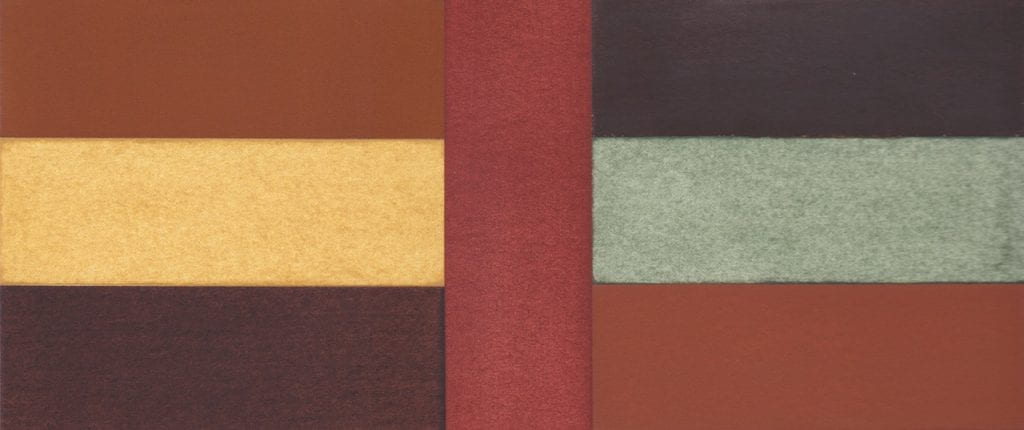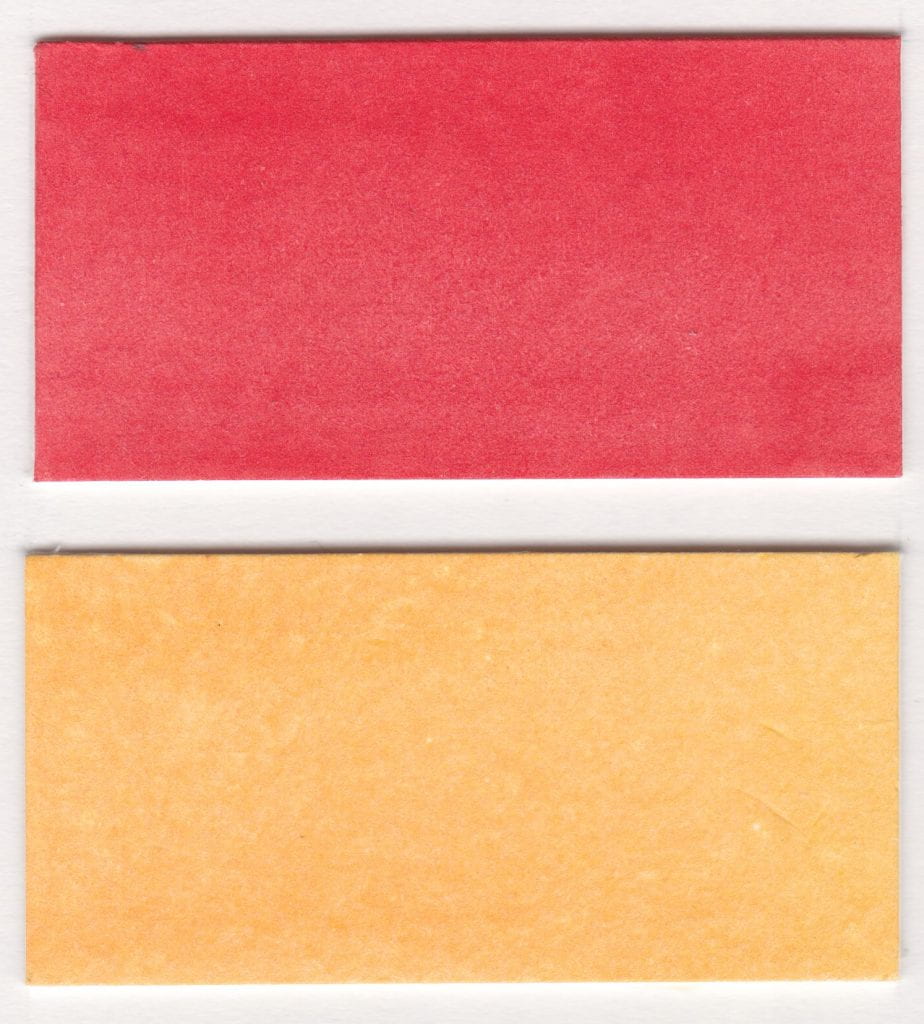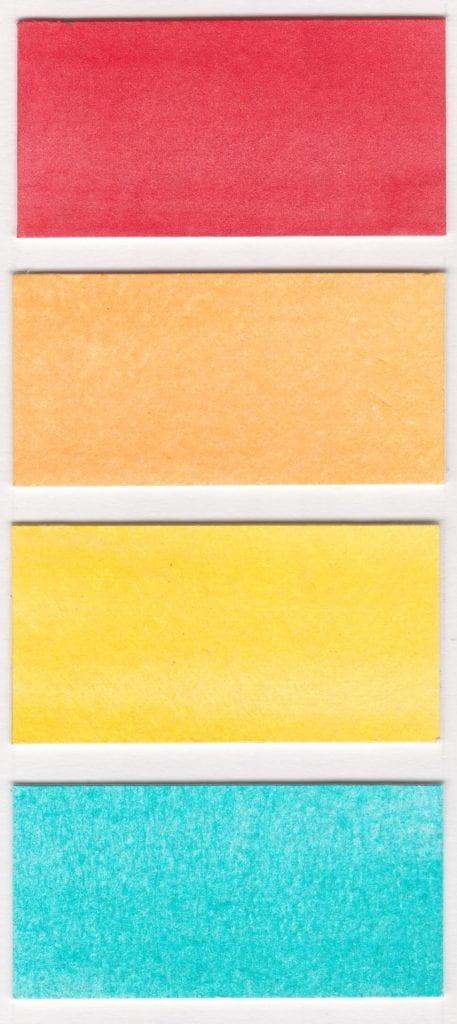A Colour A Day: Week 25
By Ruth Siddall, on 13 September 2020
A Colour A Day: Week 25. 7th-13th September
Jo Volley writes…
A method for making shell gold
Grind either skewings or leaf gold with a small amount of clear honey into a paste using a muller and slab. Work the muller slowly in a figure of eight until you have the mixture spread out thinly on the slab, gather up and begin grinding again. Continue this process for approx. 15 minutes or until you have broken down the gold into fine particles. Place the mixture into a glass and fill with hot water to flush out the honey.

When the gold has settled to the bottom of the glass decant the water.
Repeat approx. 5 or 6 times until all the honey is removed. De-ionised or distilled water is recommended for the last 2 stages. Allow the gold pigment to dry. Bind with gum Arabic and store the gold paint in a shell.
All pigments are bound in gum Arabic on W&N watercolour paper.
First column left to right: Four gold pigments gifted by the artist, Lisa Milroy, collected on her travels in China.
Second column top to bottom:
Schmincke pale gold
Jo Volley’s shell gold
Schmincke rich pale gold

 Close
Close























